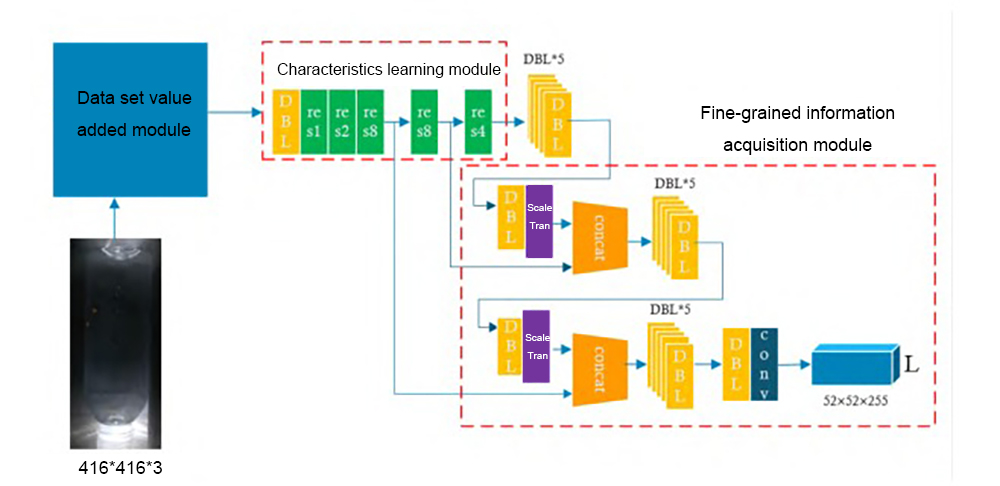Foreign matter detection in bottled water based on machine vision detection technology has important application value in the bottled water manufacturing industry.
Bottled water needs to be detected for foreign matter before leaving the factory (industry generally stipulates that insoluble substances with a radius greater than 50 μm are foreign matter). At present, the main means of detection in this part is to use human eyes to find foreign matter. Manual light inspection consumes a lot of manpower and material resources, which is harmful to human eye health, and has low detection efficiency and poor reliability. Traditional machine vision detection can alleviate this problem to some extent, but its performance depends on the quality of the image, and the detection rate and detection accuracy need to be improved.
Deep learning can effectively capture the characteristics of the target object. The AI visual detection of foreign matter in bottled water combined with the machine vision deep learning algorithm can greatly improve the detection efficiency and improve the accuracy of foreign matter detection.
Manual light inspection:

Types of foreign matter samples in bottled water: a: hair, b: rubber, c: mosquitoes, d: plastic —

Bottled water sample image:

Detection Method: Small scale feature detection method for detection of foreign matter in bottled water.
The traditional machine vision detection accuracy is low, the background interference is large, and the leakage rate and false detection rate are high. Aiming at the above problems, a small-scale feature extraction algorithm for detecting foreign matter in bottled water is proposed. The algorithm mainly includes discriminative feature learning module, data enhancement module and fine-grained information acquisition module. For foreign matter in bottled water, in the discriminative feature learning module, a reasonable a priori frame size is designed and the feature map is processed by using the clustering method. By imposing loss constraints on the output of the network, discriminative features are provided to the model for extraction. The increase in the number of samples has a positive effect on the performance of the detection algorithm. To this purpose, the data enhancement module is proposed. In this module, the self-constructed dataset is expanded by random channel reorganization and restructuring. In addition, in the fine-grained information acquisition module, a small-scale feature learning mechanism is used for feature extraction and characterization of foreign objects. Experimental results show the superiority and effectiveness of the proposed algorithm, with an average accuracy of 96.22%, mAP value of 83.84%, recall rate of 86.31%, and detection speed of 50 f/s for the detection of foreign objects in bottled mineral water.Therefore, this study can provide reliable technical support for the detection of foreign objects in bottled mineral water.
Network structure:









